Of the vast number of grass types in existence, Bermuda grass is a rather strange breed. Despite its name, it’s actually native to Africa, which explains its incredible tolerance for hot weather. This grass can be a real challenge to identify, has specific maintenance needs, and often falls within homeowners’ “most unwanted” category. That said, here’s a quick guide to Bermuda grass, including how to identify it, care for it, and remove it.
Mature Bermuda Grass
Color
Bermuda grass has a deep green color (sometimes appearing almost blue-green) that forms in large patches. Especially rich and dark in comparison to other grasses, this makes it fairly easy to identify.
It’s particularly noticeable in the summer months. While the rest of your turf goes brown from heat or drought, it will stand out thanks to its vibrant coloring.
The downside of this is that in winter, it will form forlorn brown areas on your lawn, while the other cool-season grasses are thriving.
Bermuda grass also tends to retain heavy dew on its blades in the early morning, so it’s identifiable through that as well.
Unique Grass Blades
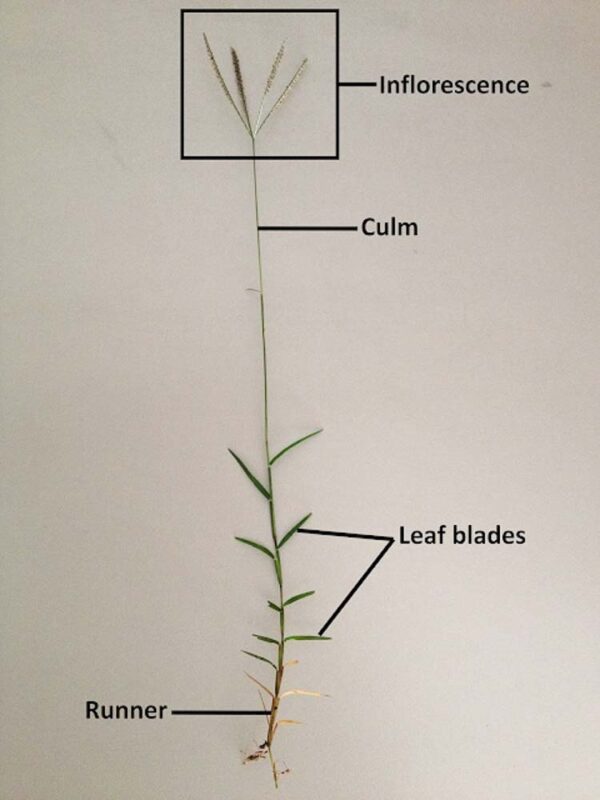
Bermuda grass is notable for having fine and slender blades with small hairs. These can be sparse or plentiful, depending on the biotype.
Meanwhile, other grasses of this type tend to have broad and flat blades.
Long Stolons
How a grass type propagates is one of the ways to identify it.
In the case of Bermuda grass, it has long runners and stolons that tend to creep outward from the initial grass patch. This allows it to spread actively through both underground rhizomes and surface stolons. It also makes it fairly difficult to control.
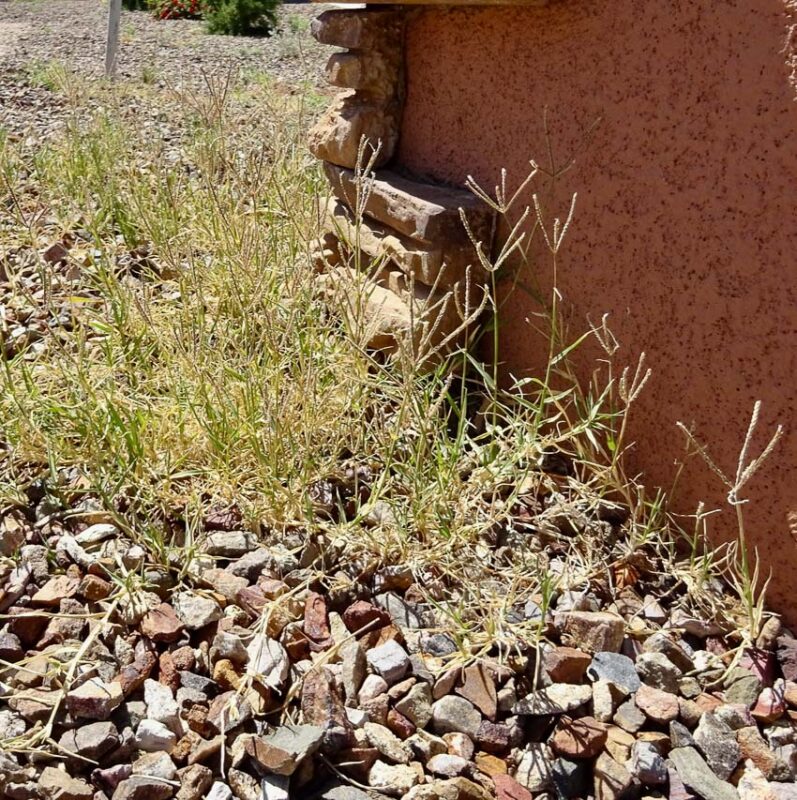
Because of this, you’ll frequently observe Bermuda grass stolons spreading steadily over sidewalks and drives.
Short Lengths
This grass survives and even thrives in shallow mowing heights, so this can be another factor for identification.
Most grasses die out or struggle when mowed shorter than 2.5 inches. However, Bermuda grass can perform well even when cut to less than 1.5 inches.
Summarizing Bermuda Grass: Appearance and Behavior
- It has a deep blue-green color, darker than most other grasses
- It forms in large patches
- It’s slender, soft, and fine-bladed
- Bermuda grass stolons spread easily, invading sidewalks and drives
- It can thrive when cut very short, even less than 1.5 inches
If the grass you’re trying to identify fits the bill, then you’re likely dealing with Bermuda grass.
Of course, this is primarily applicable if you’re viewing mature grass. There are different traits for the sprouts.
Bermuda Grass Sprouts
Bermuda grass sprouts are distinct from their mature counterparts.
The sprouts grow straight up from the soil, with two grass blades developing at the end. These blades grow out in opposite directions. As they continue to grow, they eventually develop smaller blades across their central stalks.
Additionally, younger Bermuda grass may take on lighter colors and different characteristics, so it’s worth letting it mature a little before making a definitive ID. However, if you urgently need to know what type of young grass you have, here are some characteristics that can help you spot a Bermuda grass sprout.
Color
First, be aware that the sprouts may not be the same as the dark, rich green that characterizes mature Bermuda grass. Most Bermuda grass sprouts have a brownish-purple color at first.
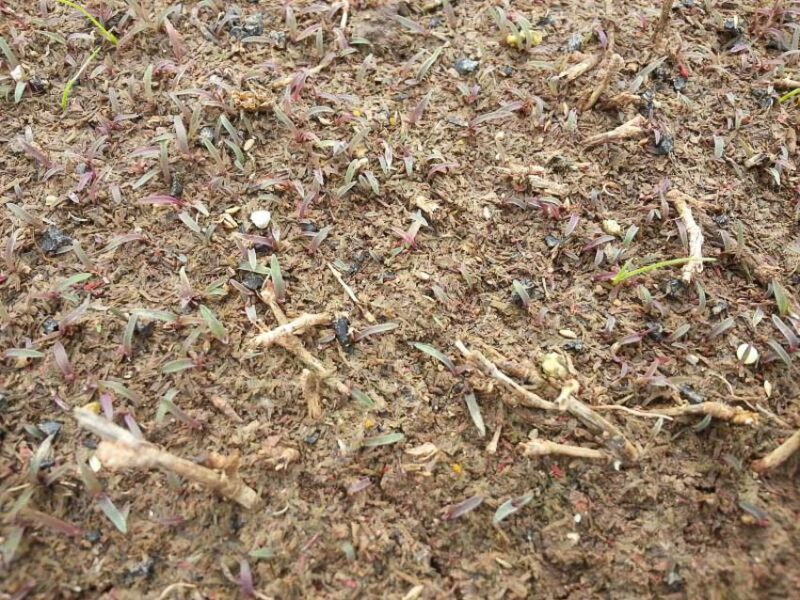
This color blends into the soil, making it hard to see.
As the sprouts grow and mature, they will start growing leaves. These will then hold the rich green color you usually see in mature Bermuda grass.
Texture
Bermuda grass sprouts have a slender shape. As they develop and mature, they become thicker and broader.
However, they are still relatively thin and delicate compared to other grass types.
Seeds
When looking for distinguishing features, it’s also worth noting the appearance of the seeds and how they grow.
Bermuda grass produces seedheads around midsummer up to fall. The propeller-shaped seedheads stand slightly taller than the blades.
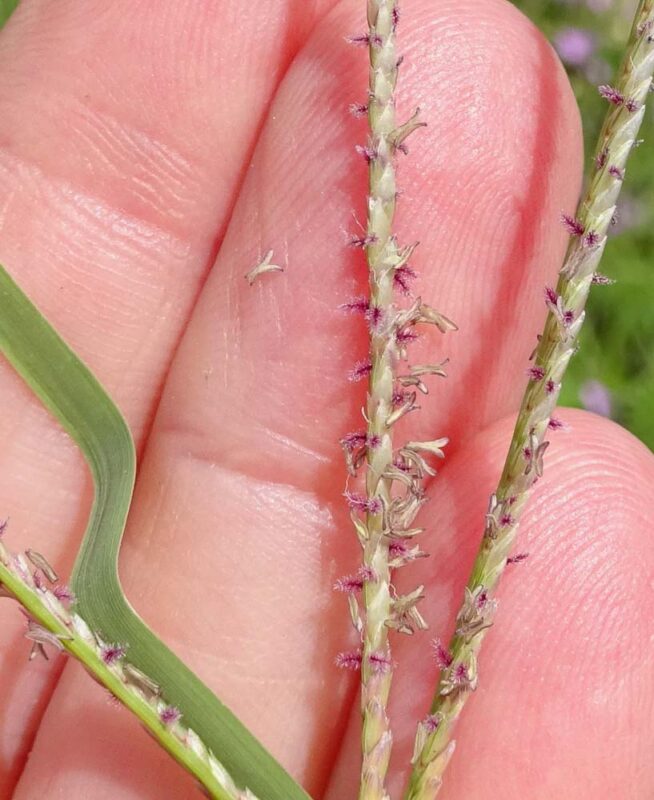
When the wind is up, they disperse tiny seedlings into the air. These drift down to the soil, which then grows more patches of grass.
The seeds will develop tiny pale shoots once they break out of dormancy. They also sprout thin, fine white roots.
Bermuda Grass Mowing and Trimming
Ironically, given its resilience in the face of short mowing lengths, Bermuda grass can be tricky to cut.
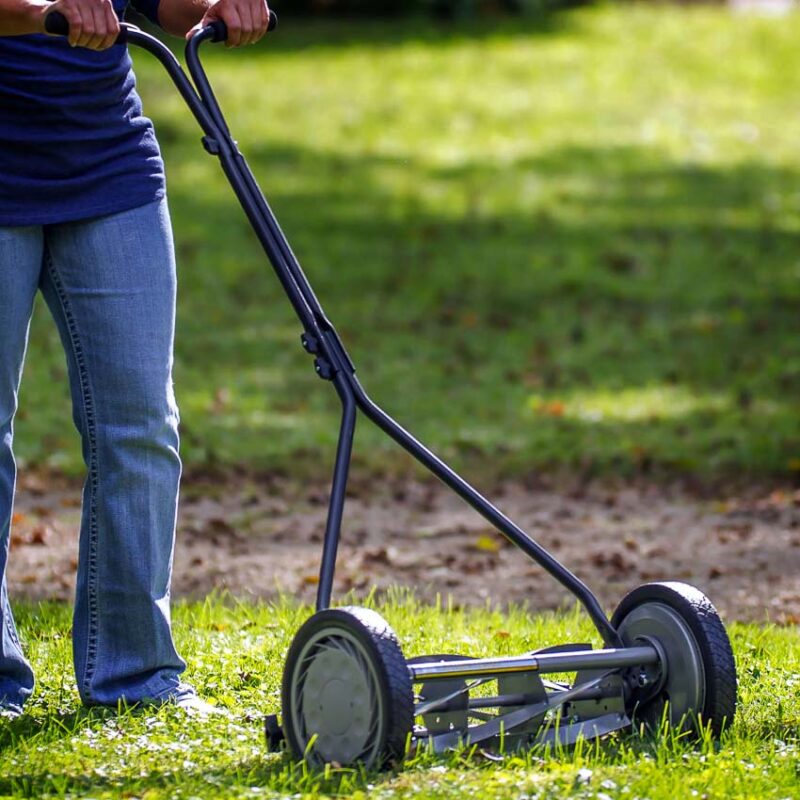
The short mowing length is actually at the heart of this grass’s bad mowing reputation. Because it is best cut short, many mowers either fail to cut the stems or tear up the turf.
Always check that you’re using the right mower for the job. In the case of Bermuda grass, this is a reel mower.
Warm Seasons
After winter, the top of your grass will grow slowly. Mowing the brown Bermuda grass is the first job you’ll need to do at the start of the year.
You’ll want to set your mower lower than usual, at around half an inch to an inch. It will slowly prepare the grass to return to its normal appearance. However, ensure you don’t mow low enough to damage the rhizomes and stolons.
When the soil begins to warm, your grass will start turning green again. This means it’s returning to normal–the appearance of what the grass looks like in its active state.
Once this happens, you’ll want to mow at the recommended height and not lower.
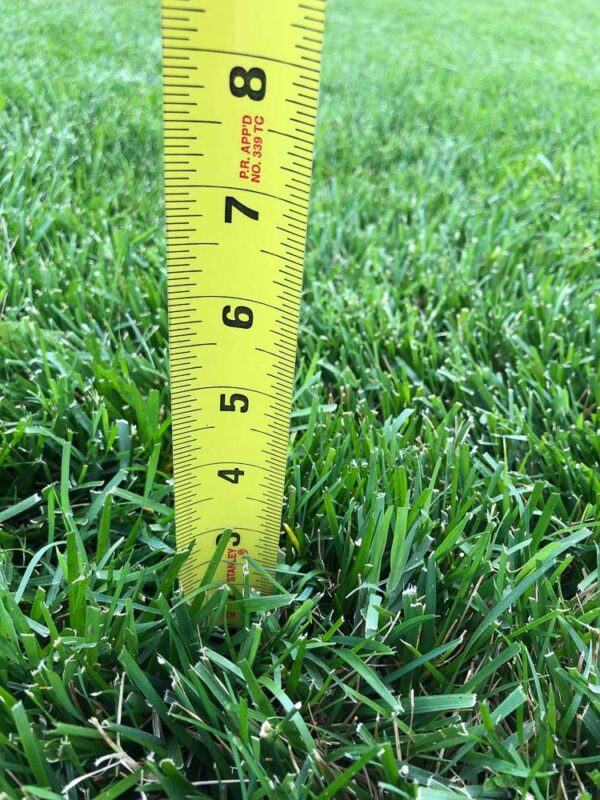
Take note that there are two categories of Bermuda grass: Common grass and hybrid grass. They also have different ideal mowing heights.
- Cut common Bermuda grass to around 2 inches
- Cut hybrid grass to around 1.5 inches
Throughout the rest of the season, mow consistently, and don’t let it grow too tall. If it grows too high, you’ll scalp your lawn when you mow by removing most of the green portion.
Removing more than ⅓ of the grass in one go may also stall its growth and make it more susceptible to damage from stress. This will harm the appearance and the health of your grass.
Cold Seasons
Once the air and soil cool, you’ll want to slowly raise your mowing level to give more length to your Bermuda lawn–around a quarter- to a half-inch height increase. This is best for warm-season grasses once evening temperatures reach below 70F.
The height increase allows the grass blades more space to grow their leaves and encourages photosynthesis. It also reduces the chances of winter damage, so you’ll want to stick to this practice.
Bermuda Mowing Height Summary
- January through April: Cut to around 1 inch
- May through August: Mow consistently at about 2 inches
- September through December: Increase your mowing level slightly when the air cools, until the evening temperature dips below 70F
Author’s Note: Did you know that there are technically over 11,500 types of grass?
Is Bermuda Grass a Danger to Other Grass Types?
Most lawns hold a mixture of different grass species to maintain a green hue all year round. Unfortunately, more aggressive species of grass can ruin the development of their neighboring types.
Bermuda grass is an aggressive warm-season species with a beautiful appearance, but it has its downside.
It can invade and infest other turfgrasses, especially Zoysia grass and tall Fescue grass. The key to preventing this is growth control and root removal.
Getting Rid of Unwanted Bermuda Grass
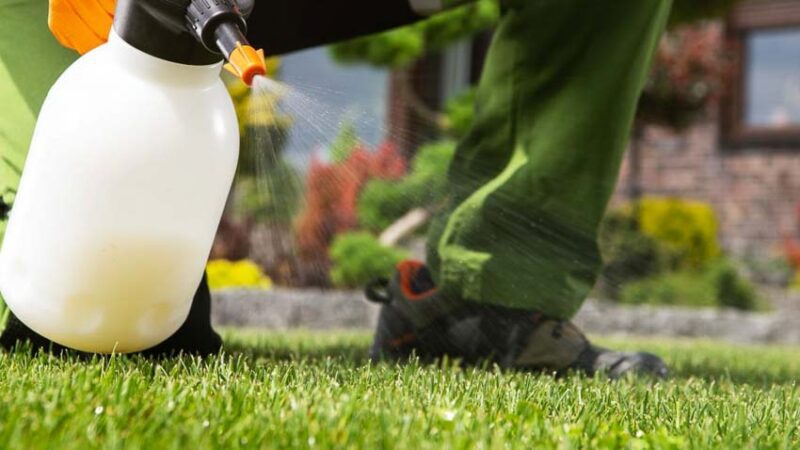
If you control your Bermuda grass well, you won’t have to resort to complete removal, as you can prevent it from overrunning other grasses.
While you can use either natural or herbicidal methods, natural management is the best, if possible.
Keeping your turf thick and healthy and mowing it at the correct times are the basics. It can keep your Bermuda grass and your overall lawn appearance how you want it.
Mulching flower and plant beds can also help minimize the Bermuda grass invasion. When other methods are not an option, solarization and withholding water may also be effective for Bermuda grass control.
If it gets to the point where you have to kill off Bermuda grass, you’ll have to resort to herbicides. If you go down this path, then make sure you time it right and treat it when it’s actively growing during spring. Closely follow the herbicide manufacturer’s instructions, especially the rates of treatment and spray.



